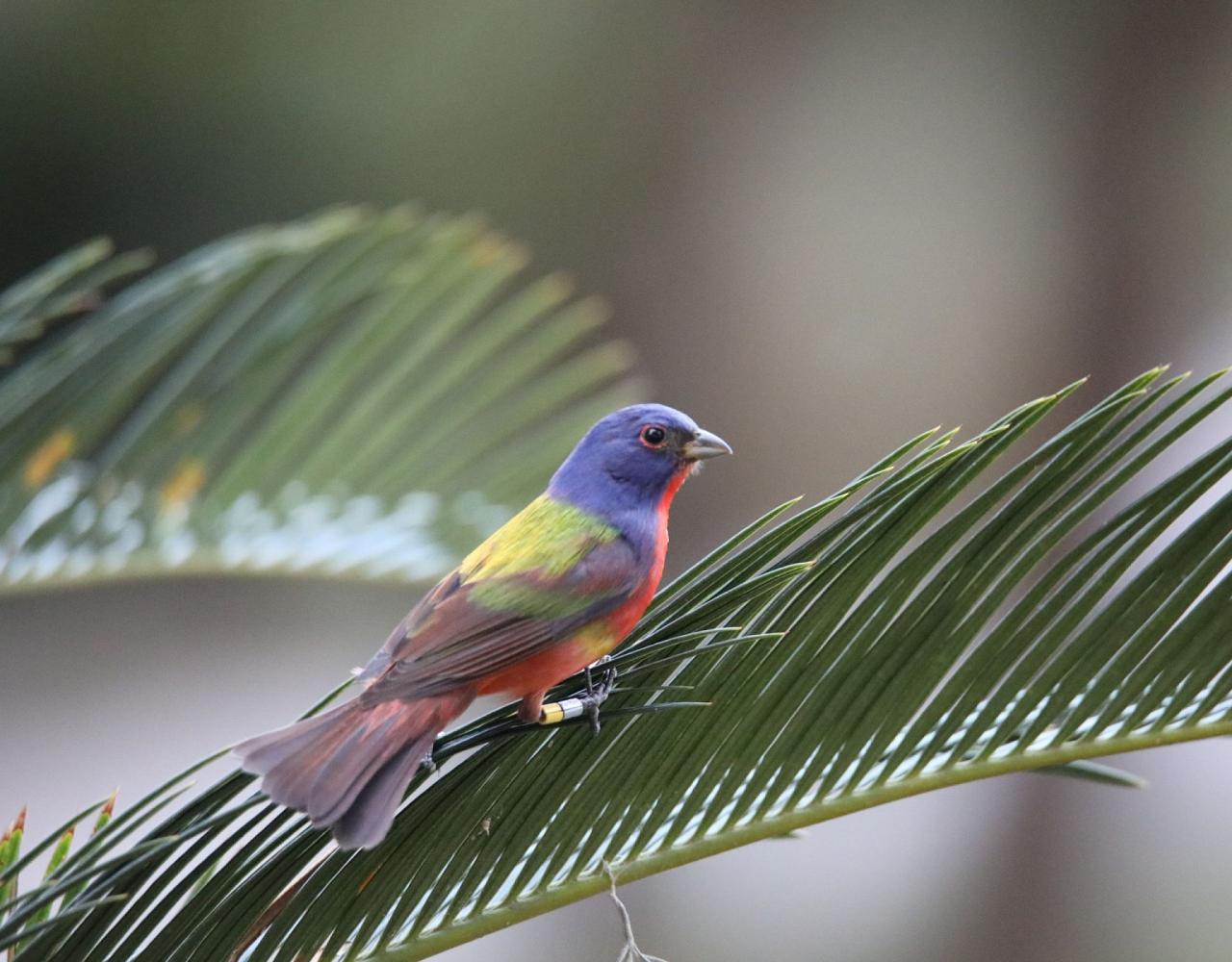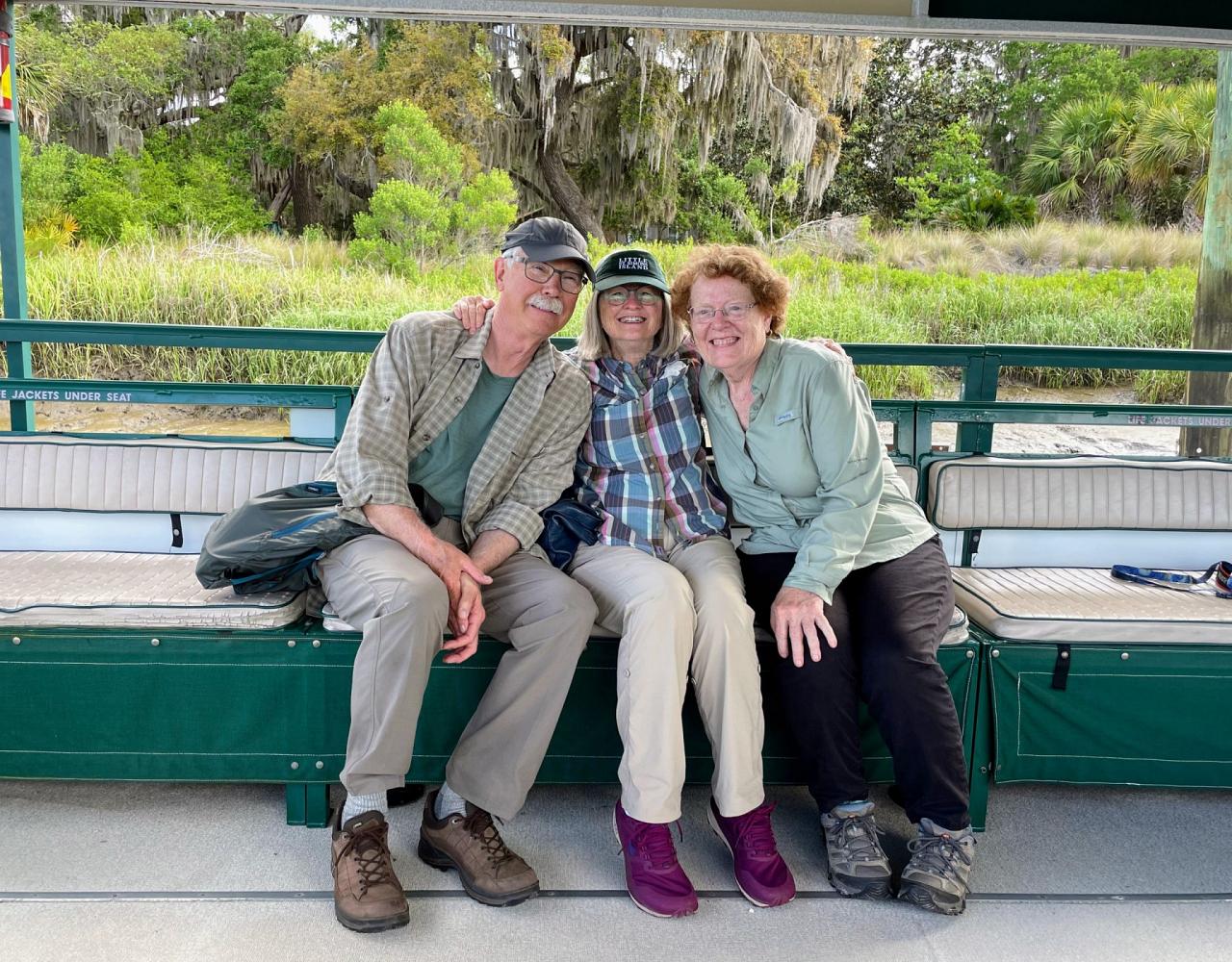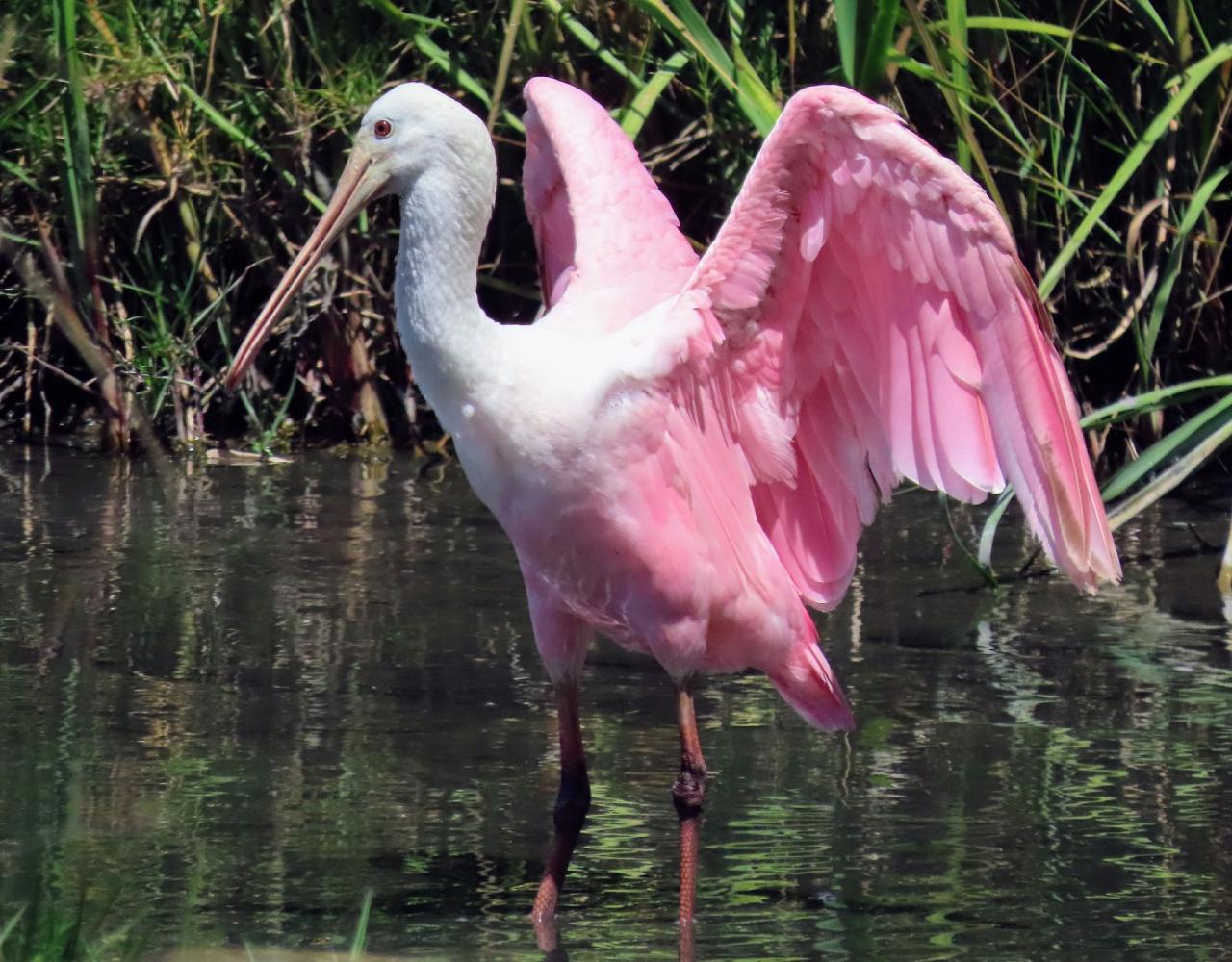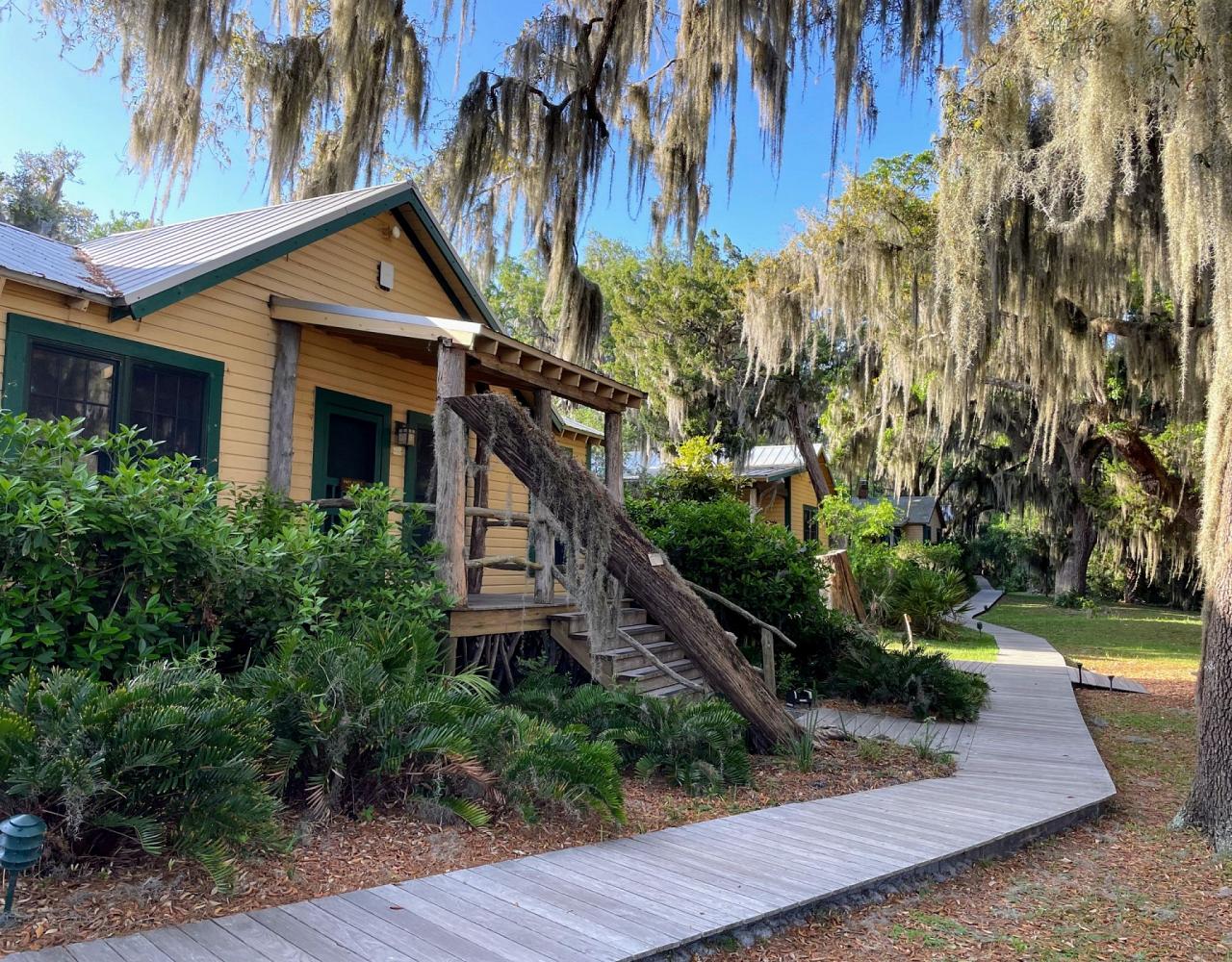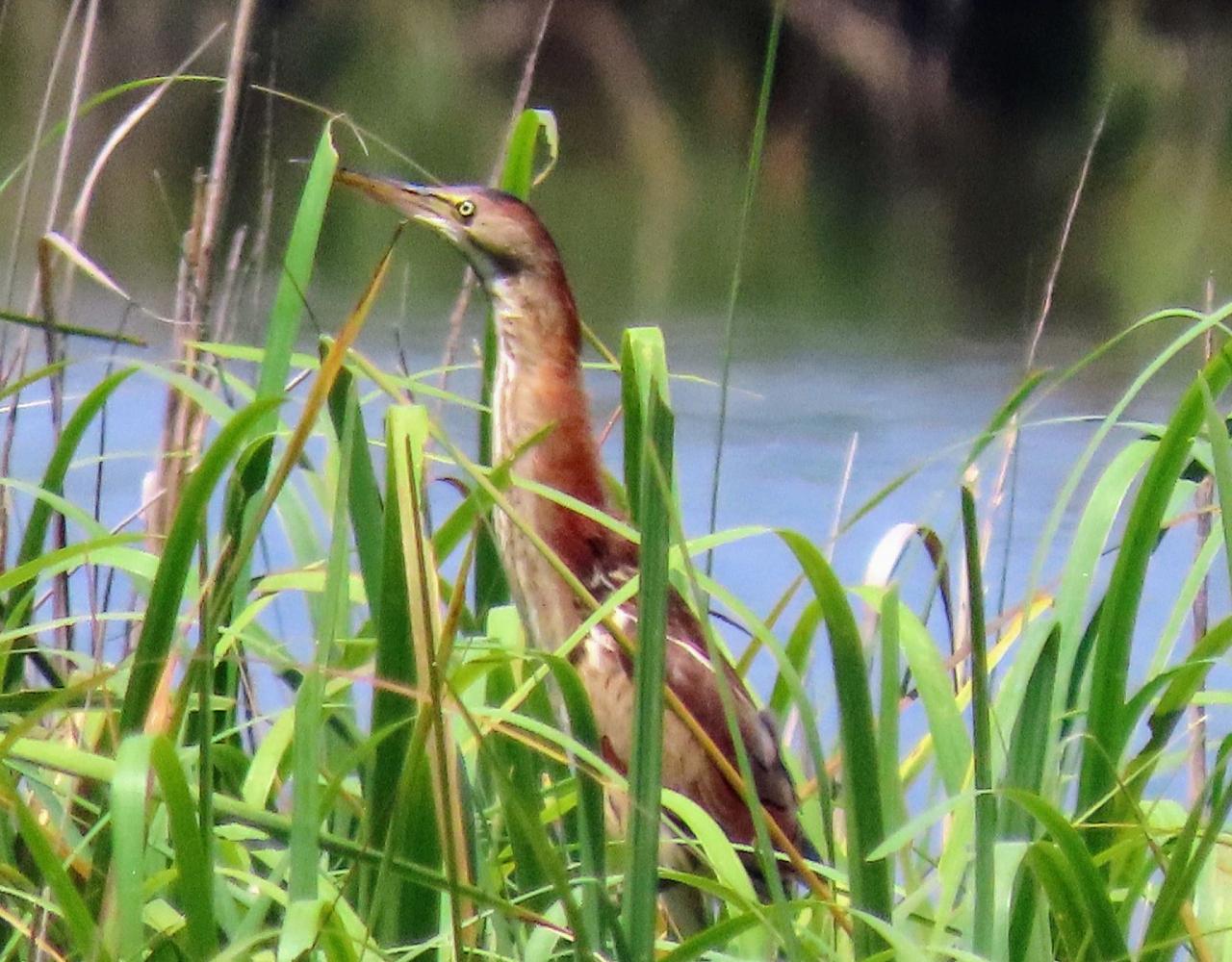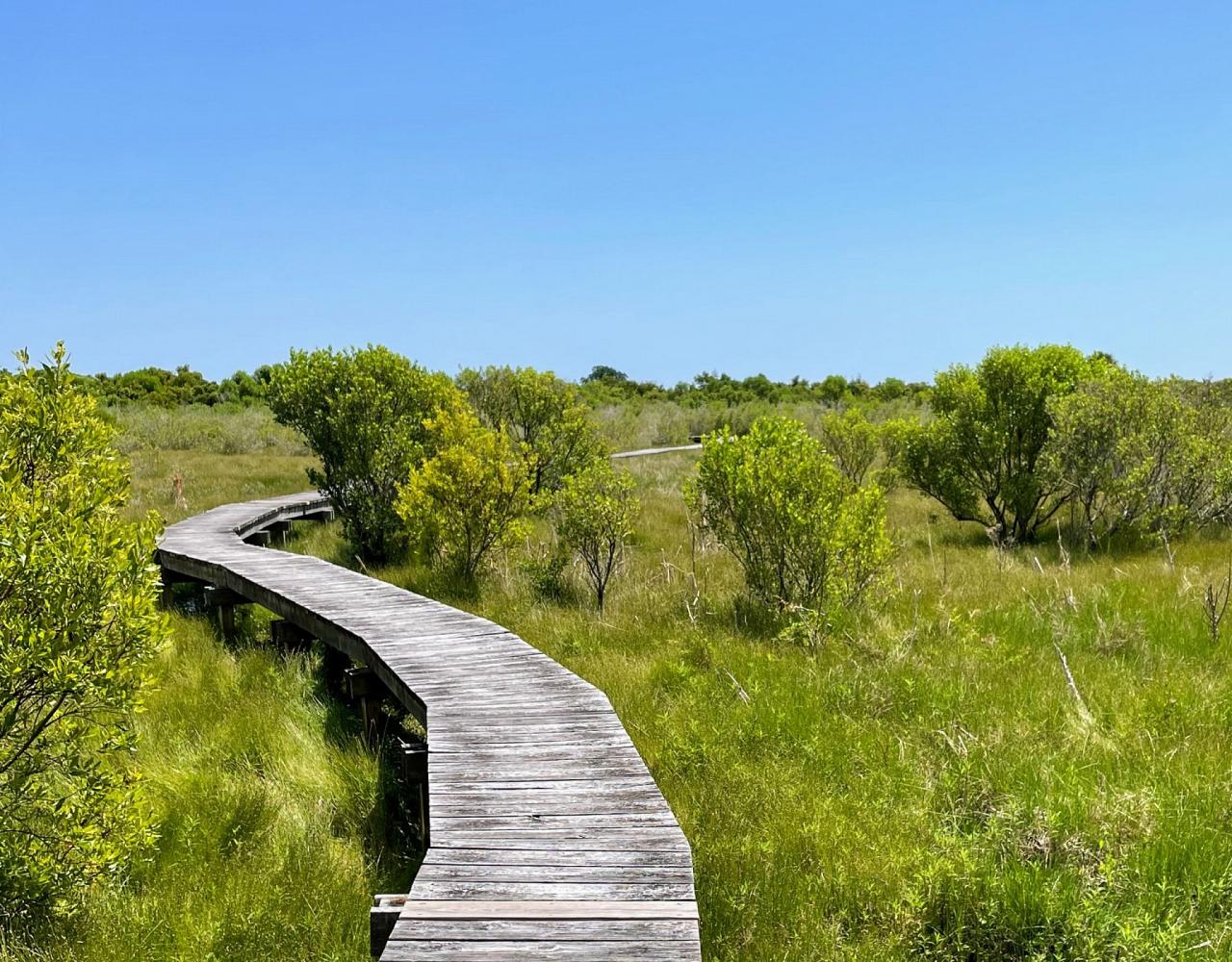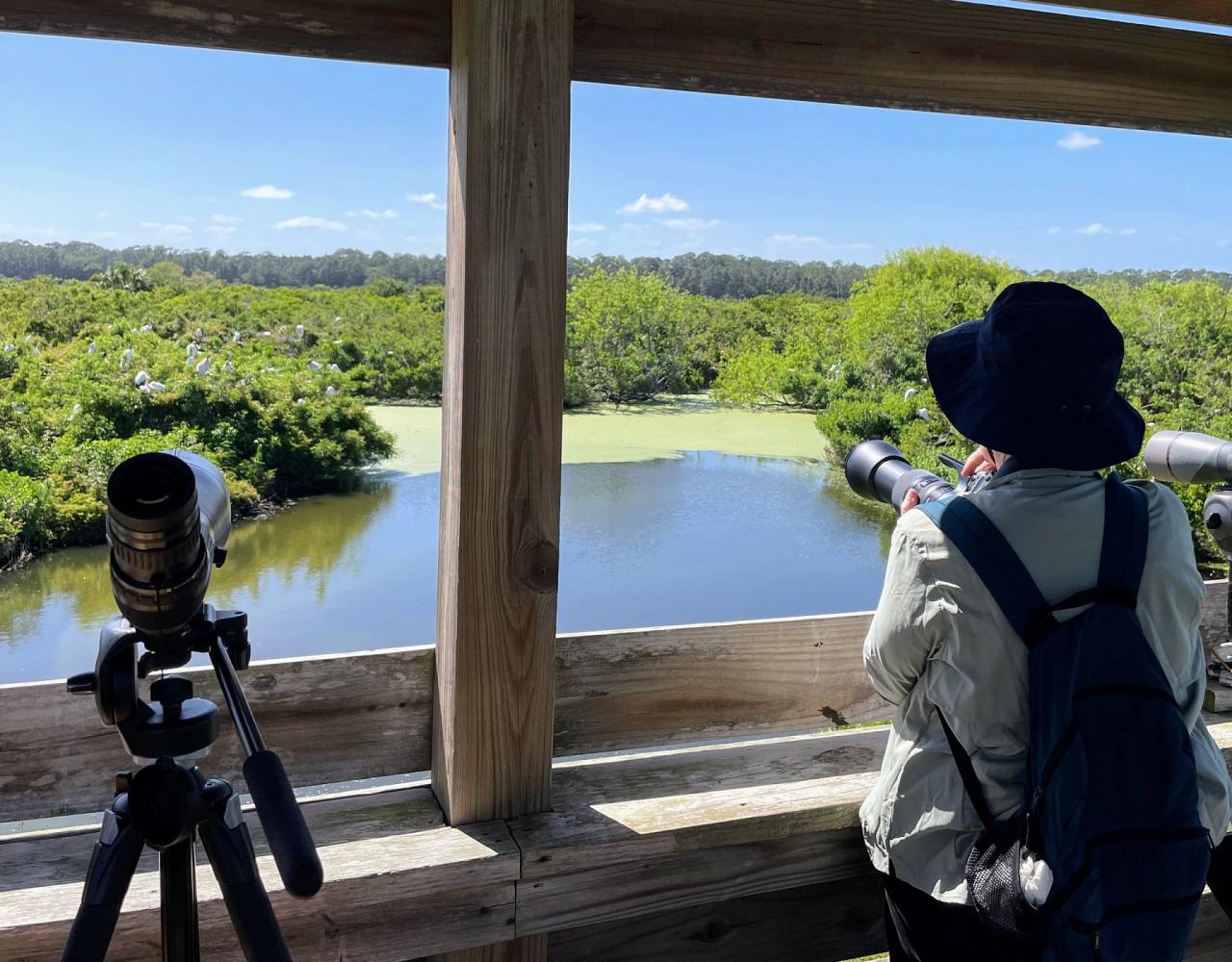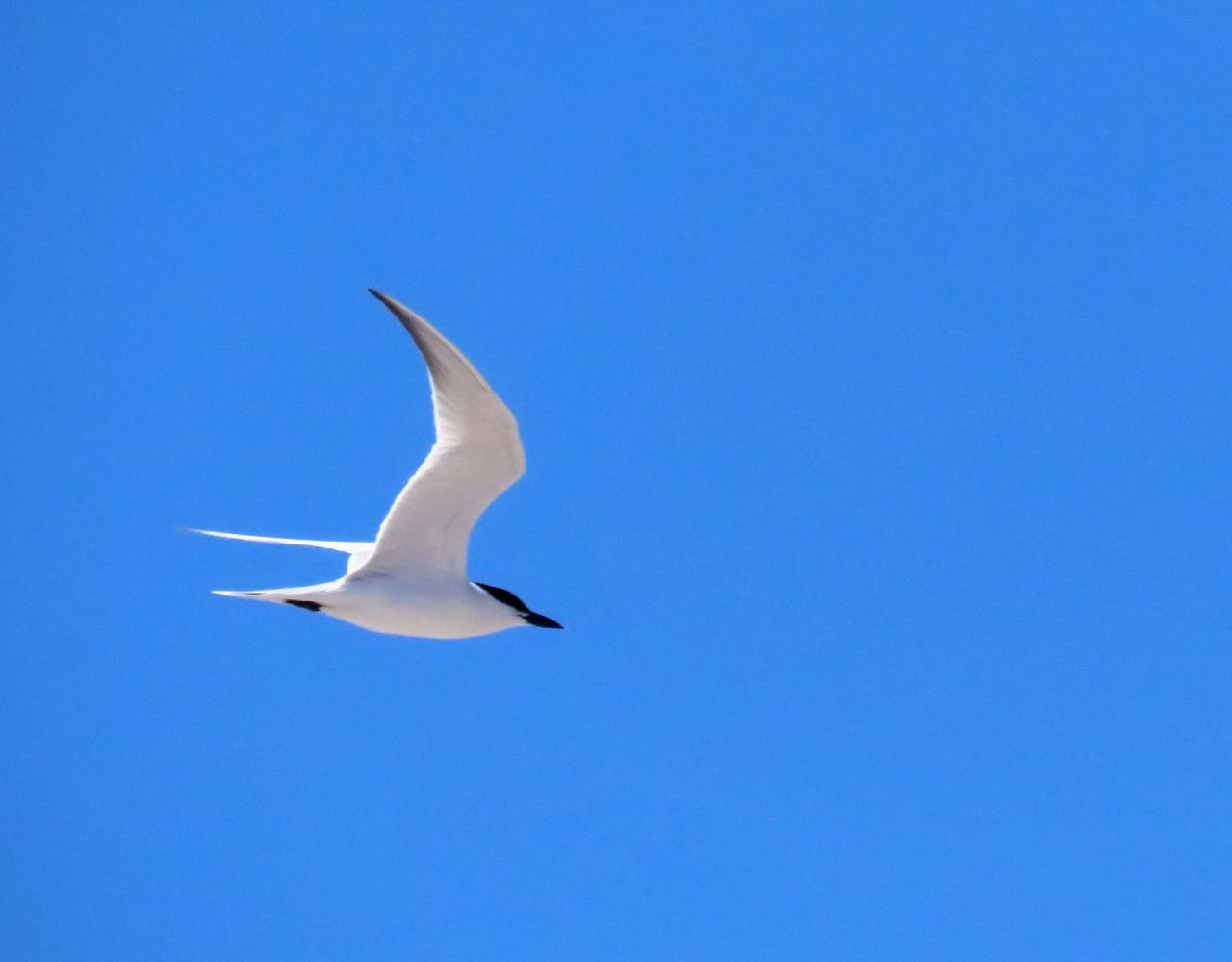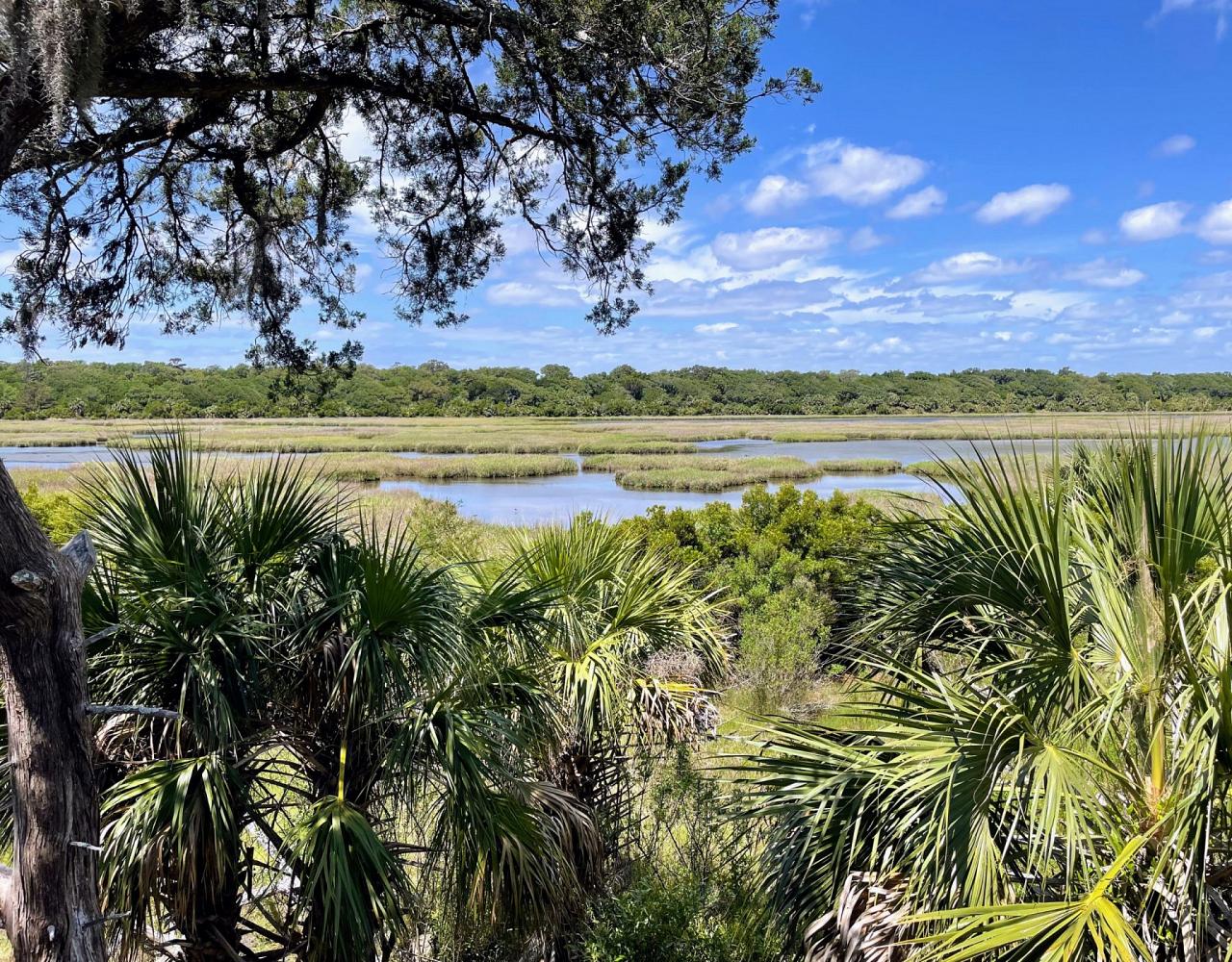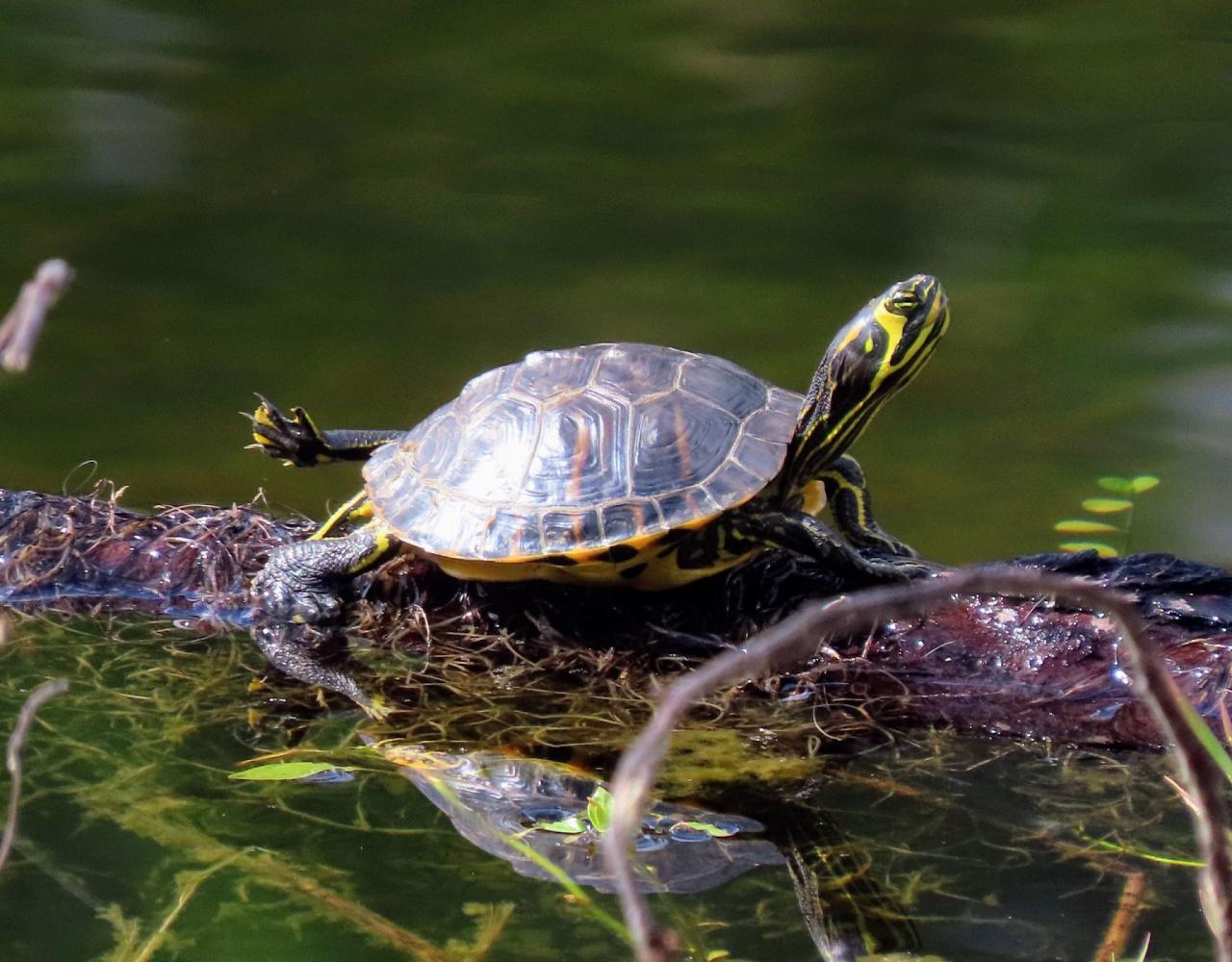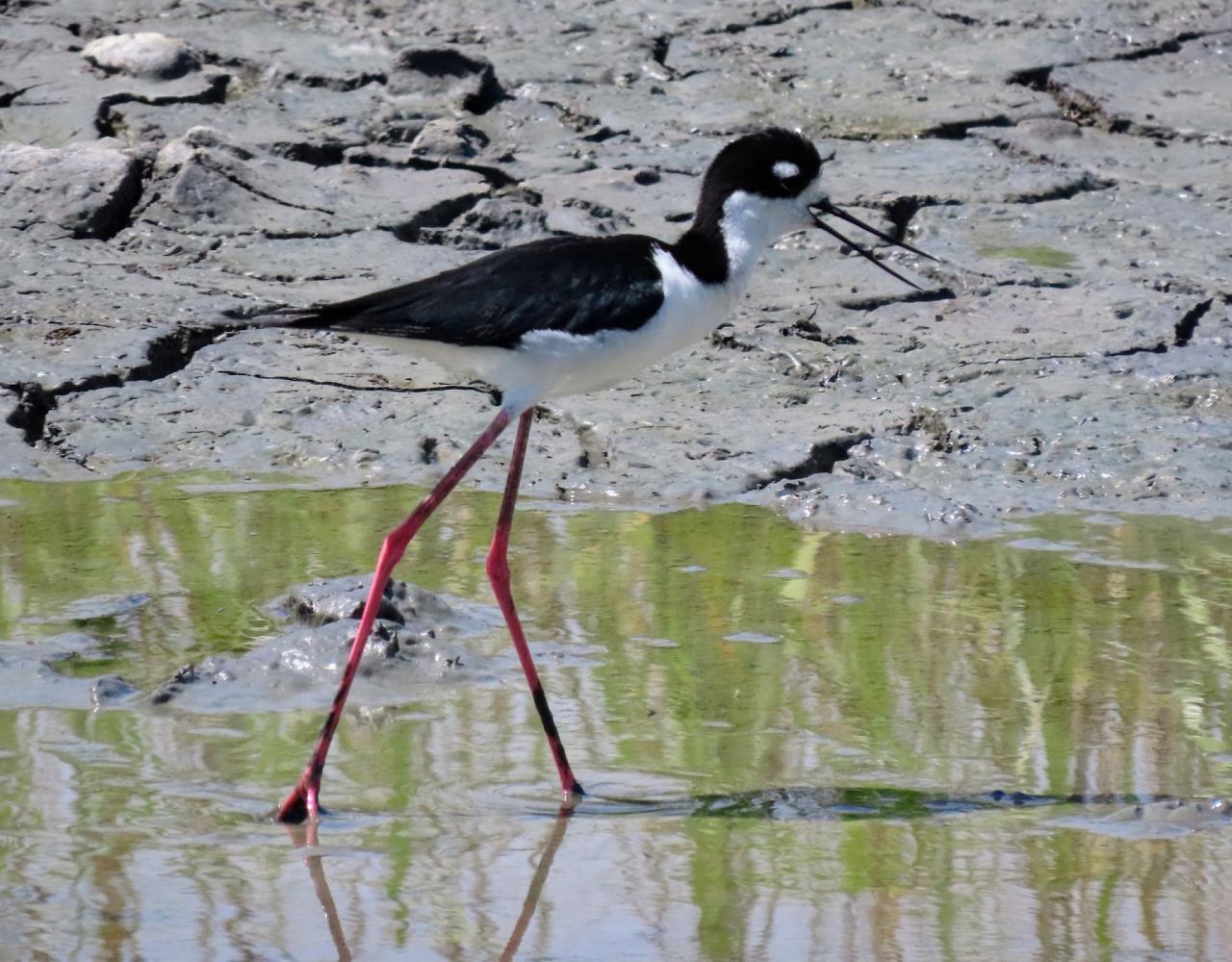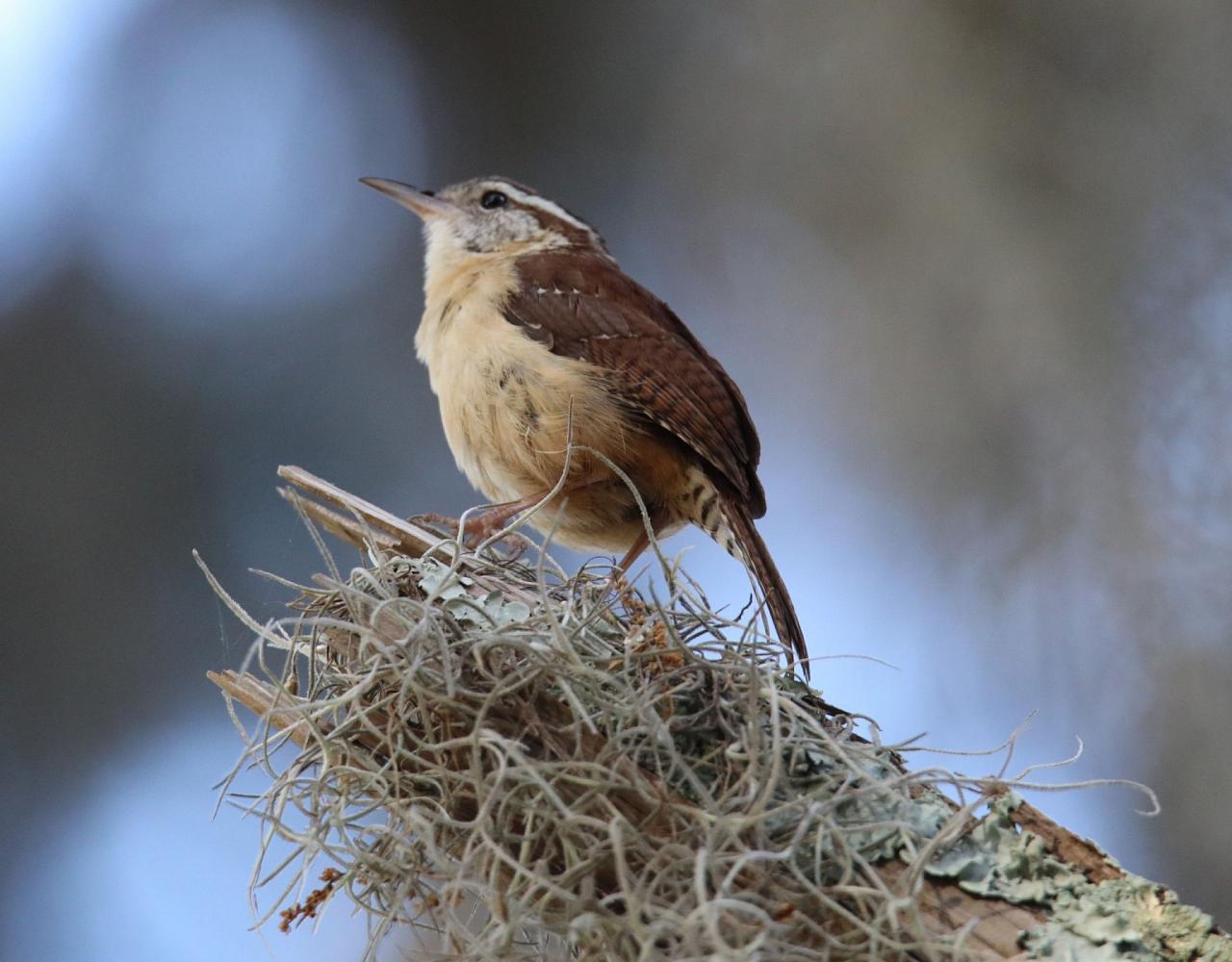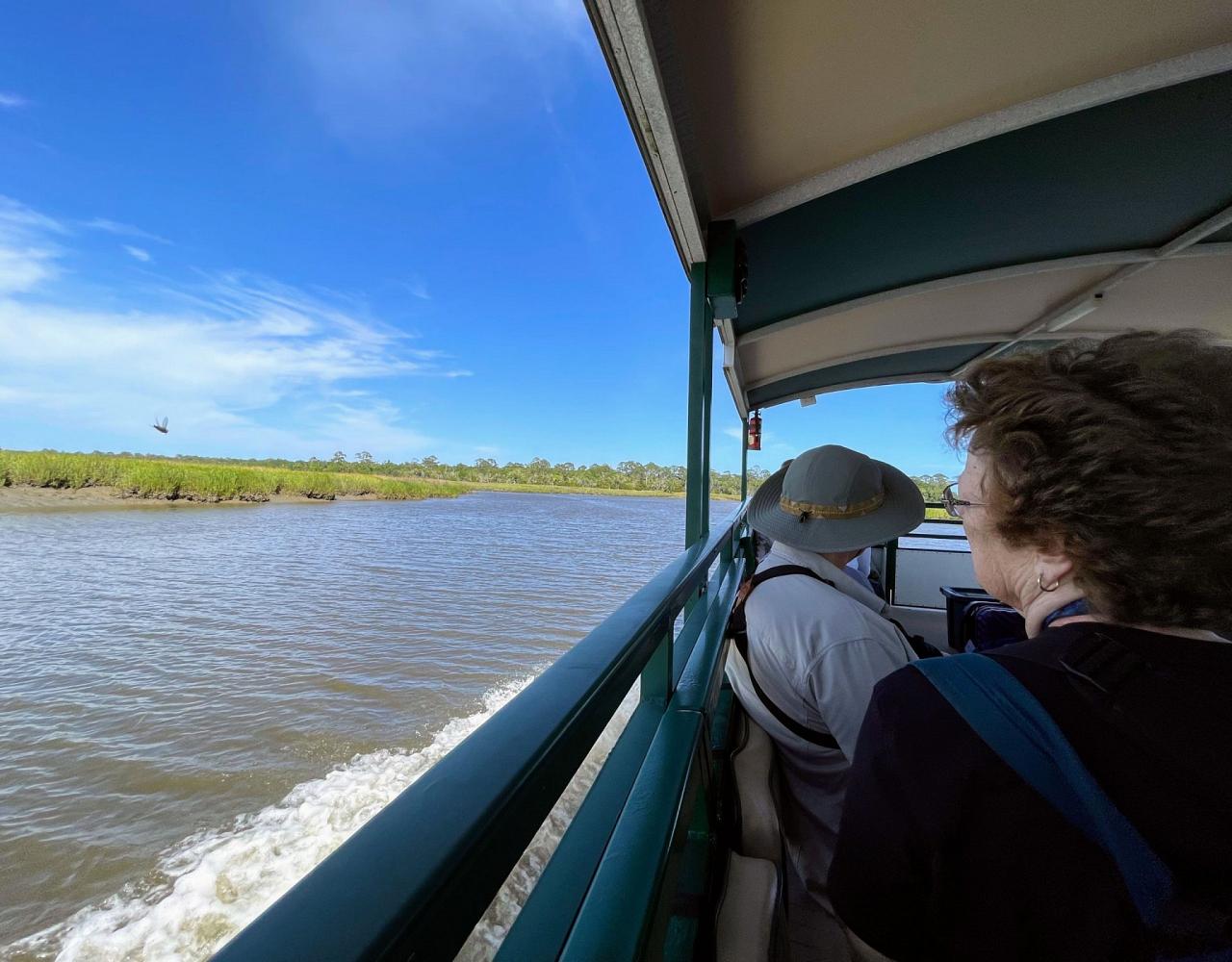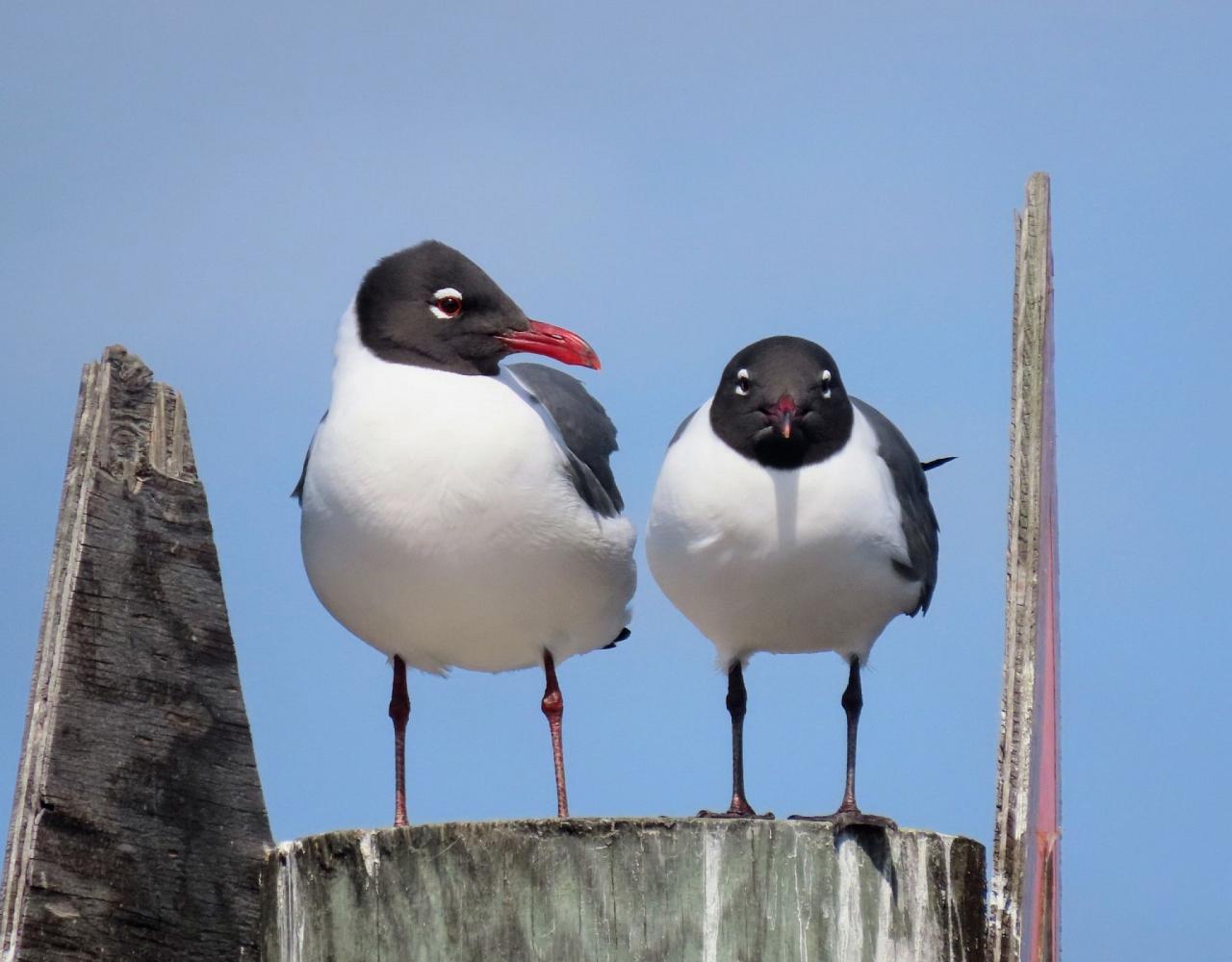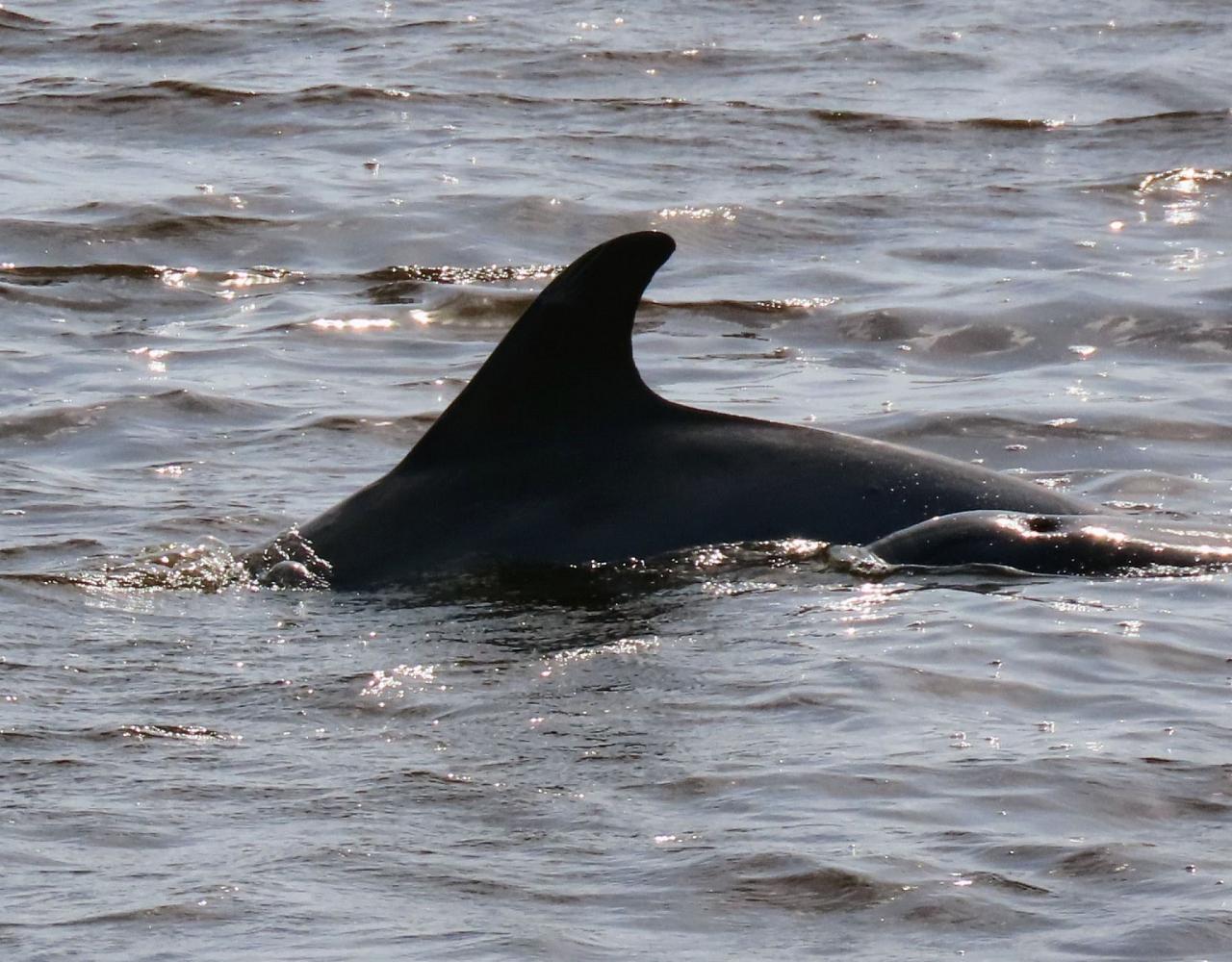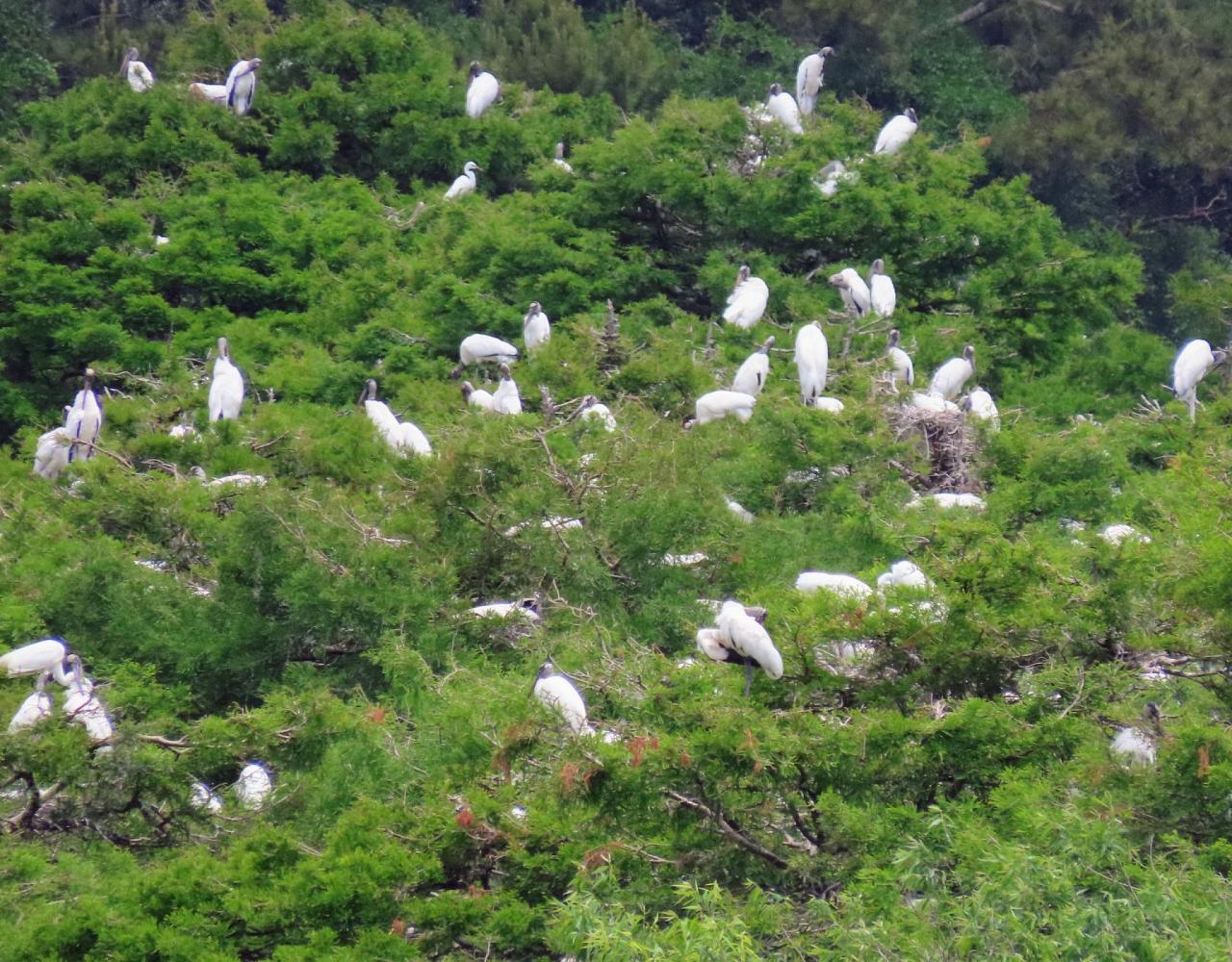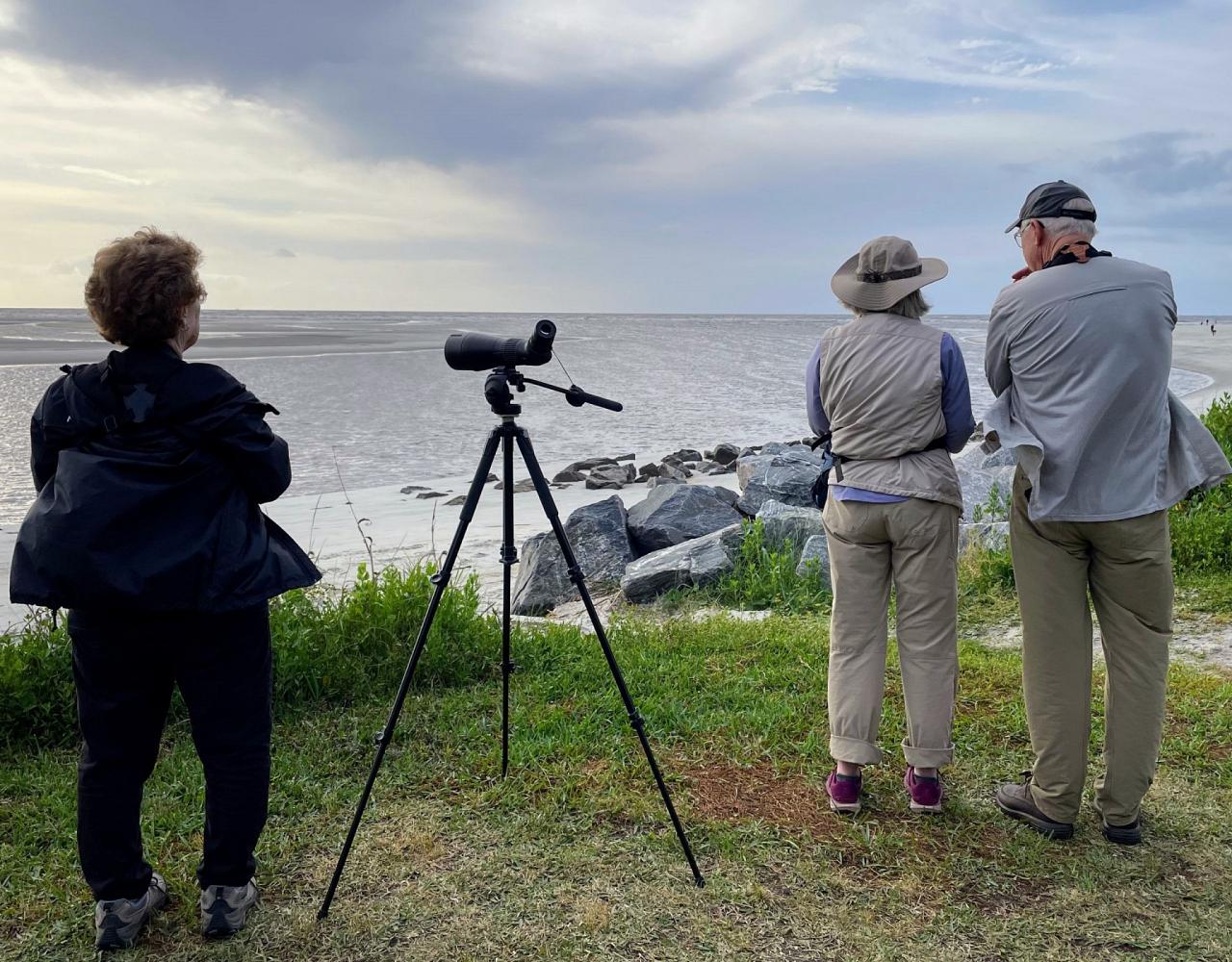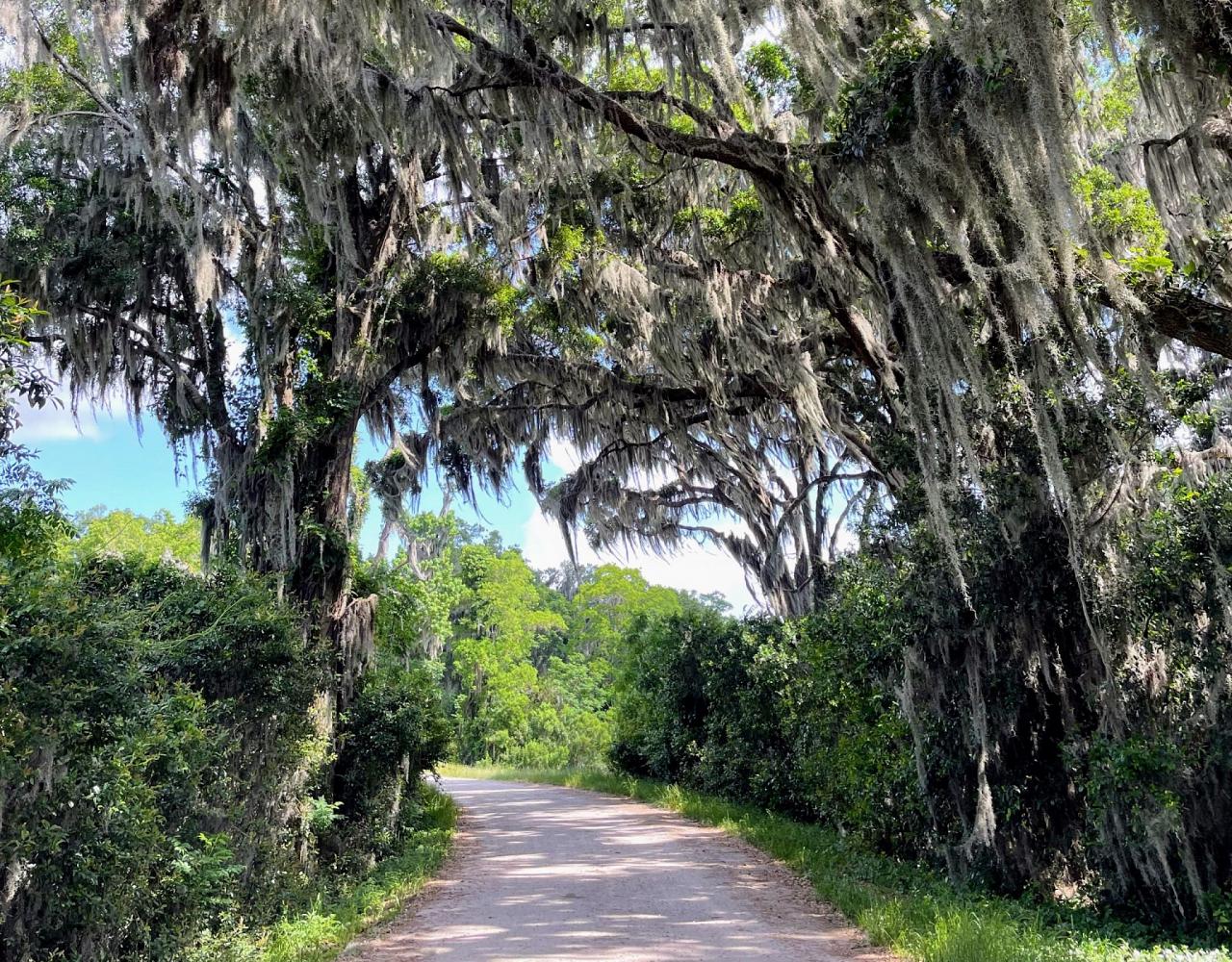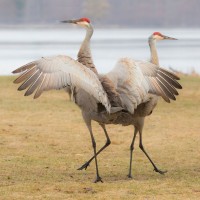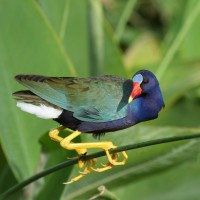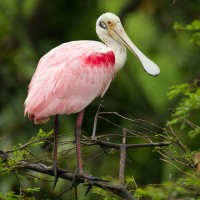- Overview
- Full Itinerary
- Photo Gallery
- Costing
- Travel Details
- Trip Reports
- Guide
- Know Before You Go
- Other Trips You May Like
Join Naturalist Journeys for a coastal Georgia birding and natural history tour on the Colonial Coast Birding Trail. The highlight of our journey is three nights booked at Little St. Simons Island, a private, barrier island preserved for wildlife; we cap off the trip with time in the southern jewel of Savannah. Visit inter-dune scrub and maritime forest for migrant land birds, salt marsh for rails, tidal creek and river shoreline for wading birds, and watch for seabirds and shorebirds from long, golden beaches—a tremendous variety of wildlife and habitats awaits your exploration. Georgia’s barrier islands are designated as Landscapes of Hemispheric Importance for shorebirds by the Western Shorebird Reserve Network … visit and see why!
Superb birding sites include Harris Neck NWR where easily accessible managed freshwater ponds and saltwater marsh feature a range of waterfowl, waders, and other water birds including all the herons and egrets, Glossy Ibis, and Mottled Duck. Brushy fields and paths in classic maritime forest habitat give entry to resting and feeding areas for a wide range of wrens, sparrows, and migrating land birds. The Altamaha Wildlife Management area, a former rice plantation, is managed to attract and feed waterfowl and shorebirds. Black-bellied Whistling-Duck, Mottled Duck, Wood Stork, American Bittern, four species of rails, and more await.
On this Georgia nature tour, we reach St. Simons Island, a barrier island, by causeway, which provides expansive marshlands and waterways, sandbars, and beaches. Gould’s Inlet on the southeast corner of the island is known as the best beach viewing in Georgia for shorebirds, gulls, loons, and terns. During migration this is a good place to see Red Knot and Whimbrel. Spend two relaxing nights in an uniquely decorated, stately room at the charming St. Simons Inn by the lighthouse. Take a boat tour of the Intracoastal Waterway from Jekyll Island for close views of dolphin, manatee, shorebirds, and waterfowl.
The crown jewel of the journey is a three-night stay on Little St. Simons Island, where only 32 guests at a time reside overnight in order to preserve its quiet character. More than 300 species of birds have been recorded on the 11,000-acre Little St. Simons Island, one of Georgia’s stunning “Golden Isles,” accessible only by boat. Join naturalist-led tours to many of this extraordinary natural sanctuary’s best viewing areas, observation towers, and blinds. A birder’s paradise, miles of paths and boardwalks on this magical island await you! Return to the lodge for drinks and social hour before sitting down to delicious gourmet meals of low-country, farm-to-table cuisine and a serene environment in which to rest for the next day’s adventures.
Round out the tour with an afternoon in and around Savannah, the oldest city in Georgia. Tour the Savannah National Wildlife Refuge, with towering live oaks, wading birds, and American Alligator. And take time to enjoy the historic district surrounding the Marshall House, with classic local cuisine at the farewell dinner.
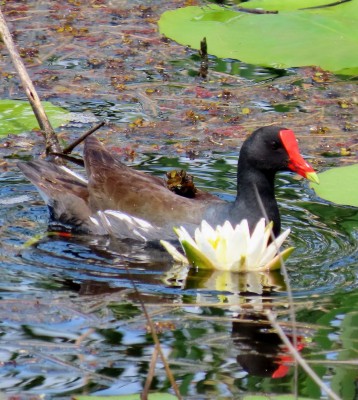
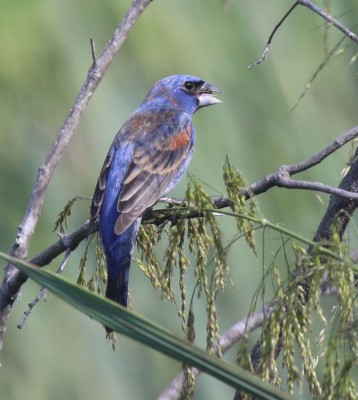
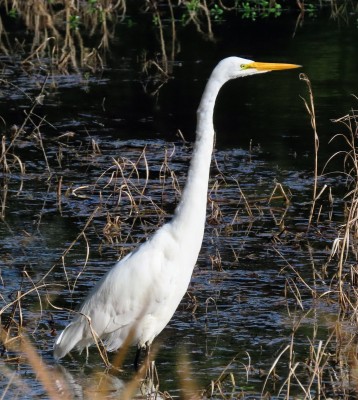
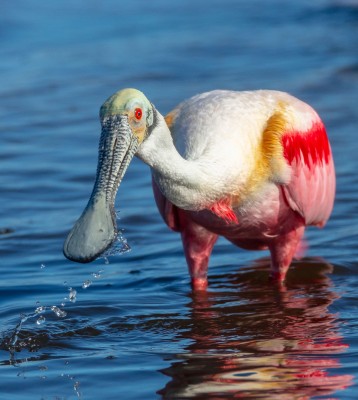
- "Fantastic! Saw over a hundred species of birds, including about 10 I'd never seen. The guide was incredible, very knowledgeable, very easy-going. All of us on the tour got along really well." — Suzanna Sherry, 2023 Traveler
- "Little St. Simons is a special place. Diversity of habitats made for a unique day every day." — Paul Edelman, 2023 Traveler
- "I have never been in a trip group that was so congenial, The guide was fabulous, It was a great experience! I highly recommend it." — Anne Taylor, 2023 Traveler
Tour Highlights
- Enjoy three lovely boutique hotels and indulge in classic low-country cuisine
- Look for migrating Red Knot and Whimbrel, Wood Stork, Black Skimmer, and American Oystercatcher along with Painted and Indigo Buntings
- Visit key sites along the Colonial Coast Birding Trail, including St. Simon Island, the best beach viewing location in Georgia for shorebirds, gulls, and terns
- Cruise the Intracoastal Waterway from Jekyll Island on a small boat for close up views of dolphins, manatees, shore, and sea birds
- Board a ferry to the private Little St. Simons Inn located on its own island, where 11,000 acres of almost entirely undeveloped wilderness, miles of beach, and established trails await
- Explore gracious Savannah, the oldest city in Georgia, established in 1773 and a strategic port city in both the American Revolution and the Civil War
- Enjoy cooler weather and migration diversity, timed to maximize your enjoyment
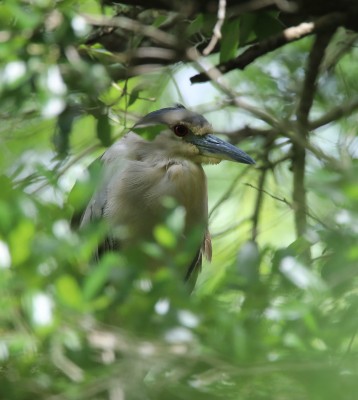
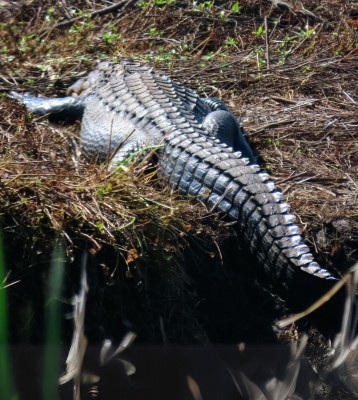
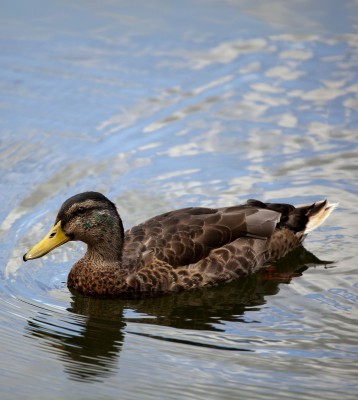
Trip Itinerary
Itineraries are guidelines; variations in itinerary may occur to account for weather, road conditions, closures, etc. and to maximize your experience.
Thur., Apr. 23 Arrivals in Savannah | Savannah NWR (optional)
Welcome to Georgia! Upon your arrival at the Savannah/Hilton Head International Airport (SAV), gather your bags and take a free shuttle to your nearby airport hotel. Those arriving by 2:00 PM have the option to join our guide for several hours birding locally at nearby Savannah National Wildlife Refuge, the largest wildlife refuge on the Georgia coast. The refuge is a short distance from Savannah and one of a chain of seven refuges that stretch 100 miles along the coastline, featuring fresh and saltwater marshes, tidal rivers and creeks, bottomland hardwoods, maritime forests, barrier island beaches, and more. On the wildlife drive, we hope to see Mottled Duck, Clapper Rail, breeding Purple Gallinule, Least and American Bittern, and Glossy Ibis.
Though the refuge may still be undergoing repair and renovation of the 3,000 freshwater impoundments system, access is available to several special sites. Take the less-than-one-mile walking loop around Kingfisher Pond seeking open water species, and ramble on easy trails around the visitor center for a view into cypress swamp along with pollinator and bird-attracting gardens. Watch for Black-bellied Whistling-duck, Little Blue Heron, White Ibis, Red-belied Woodpecker, White-eyed Vireos, and Carolina Wren among many other species, including your first alligators of the tour! Later arrivals are encouraged to arrive by 6:00 PM to join the group for a welcome dinner at a nearby restaurant.
Accommodations at the Hyatt Place Savannah Airport (D)
Fri., Apr. 24 Harris Neck NWR | St. Simons Island
This morning we drive to the southern tip of St. Simons Island, birding along the way as we work our way south. Options for stops depend on recent sightings and may include a return visit to Savannah National Wildlife Refuge. About half way to St. Simons Island, Harris Neck National Wildlife Refuge encompasses six man-made freshwater ponds, as well as extensive salt marsh, open fields, forested wetlands, and mixed hardwood/pine forest. This diversity of habitat makes the refuge an important resource for over 340 species of migratory and resident birds. We can expect to see our first of many Wood Stork. Harris Neck is home to the largest Wood Stork colony in Georgia—plentiful waders, woodpeckers, Eastern Towhee, Yellow-billed Cuckoo, and migrating breeding warblers like Yellow-throated, Prothonotary, Black-throated Blue, Prairie, and Cape May. These sites are stops on Georgia’s Colonial Coast Birding Trail, steeped in human and natural history, and promise a range of species along with easy walking to stretch your legs as you travel south.
We arrive in time to settle into your charming and unique boutique accommodations, home for the next two nights. St. Simons Island is the largest of the “Golden Isles of Georgia.” St. Simons Inn by the Lighthouse has only 34 spacious and uniquely decorated rooms in a boutique setting, with courteous staff and delicious meals. It is located across the street from the St. Simons Island Lighthouse Museum, an historic property. Settle in, take a stroll, and then enjoy dinner as a group to go over our daily checklist and to discuss plans for tomorrow.
Accommodations at St. Simons Inn by the Lighthouse (B,L,D)
Sat., Apr. 25 St. Simons Island
We spend the day birding St. Simons Island. From inter-dune scrub and maritime forest for migrant land birds to salt marsh, tidal creek, and river shoreline for rails and wading birds, to watching for seabirds and shorebirds on the beach, there is a wide variety of wildlife and habitat to explore.
In a full day, we see much of the island’s natural and historical sites. Birding sites today are chosen depending on recent sightings and are likely to include Cannon’s Point Preserve and East Beach. Gould’s Inlet on the southeast corner of the island is known as the best beach viewing in Georgia for shorebirds, gulls, loons, and terns. During fall migration this is a good place to see the Arctic nesting Red Knot and Whimbrel, too. An island rich in history, original coastal Native American tribes, Spanish missionaries, colonial and American Revolution soldiers, cotton plantations and the slave trade, as well as the Coast Guard and other WWII facilities have all left their mark.
Accommodations at St. Simons Inn by the Lighthouse (B,L,D)
Sun., Apr. 26 – Tues., Apr. 28 Jekyll Island | Little St. Simons Island
After lunch we head towards Cannon’s Point Reserve, a 644 acre property managed by the St Simons Land Trust. The Preserve contains some of the last intact maritime forest on St. Simons Island and is rich cultural and natural history. We then head to the nearby Hampton River Marina for a shuttle to Little St. Simons Island.
A crown jewel of Georgia’s famed Golden Isles and accessible only by boat, Little St. Simons Island’s pristine beaches, undeveloped wilderness, and abundant wildlife provide many opportunities for exploration and excellent birding. The entire 11,000-acre island is under easement protection by The Nature Conservancy, ensuring that the ecological integrity of the island endures. The island's undisturbed beaches and woodlands are a haven for a number of threatened and endangered species.
Trips on foot and by boat with local naturalists let us explore the island’s 330 plus bird species and wildlife. Roseate Spoonbill are common on the island, and depending on the course of migration, massive flocks of Tree Swallows may be present. The naturalist offer 2 activities at breakfast and at lunch each day that provides opportunities for experiencing the island and it's wildlife. A birder’s paradise, miles of roads, paths, and boardwalks through almost entirely undeveloped wilderness await you! And if you want to take some time to relax or bird and explore independently, there are bicycles, fishing tackle, and kayaks available for your use, a map of the island, and seven acres of private beach to stroll.
The island is alive with birds in April. We watch for migrating and breeding warblers, swallows, and other passerines moving through during migration, along with shorebirds staging and passing through, and huge numbers of migrating raptors on the wing. Early spring migrants could include Yellow-billed Cuckoo, vireos, and Summer and Scarlet Tanagers. Butterflies abound, including Zebra Longwing, Long-tailed Skipper, Gulf Fritillary, Monarch, White Peacock, and Little Yellows. Keep an eye out for active reptiles including alligators, skinks, lizards, and snakes. For those interested in trying their hand at fishing, Redfish, Seatrout, and Flounder are possibilities.
Return to the lodge for drinks and social hour before sitting down to delicious homecooked meals of low-country, farm-to-table cuisine and a serene environment in which to rest for the next day’s adventures.
Your stay features the privately owned Lodge on Little St. Simons Island, the only accommodation on the island. This is a remote ecolodge serving only 32 guests at a time. All meals are at the lodge or taken out for picnics. Menus feature regional cuisine, hand crafted cheeses and beer/cider, and local seafood.
Accommodations at The Lodge on Little St. Simons Island (B,L,D)
Wed., Apr. 29 Savannah
While it may be difficult to say goodbye to this island paradise, a very special final day awaits you. With packed bags, we depart early morning for the ferry ride to the mainland and drive back to Savannah, the oldest city in Georgia, established in 1773 and a strategic port city in both the American Revolution and the Civil War. An optional stop on our way may take time for a bit of birding to fill in any missing species or search for new sightings. Once we arrive, enjoy a walking tour of the waterfront and Historic District, where 22 park-like squares featuring moss-draped live oaks retain the original town plan prescribed by founder James Oglethorpe with pre-Civil War architecture at every turn, and learn about its storied and complicated history. Or take the afternoon to explore on your own.
Our hotel for the night, Marshall House—build in 1851 and Savannah’s oldest historical hotel—is centrally located in the very center of the historic district. Rooms are elegantly appointed and comfortable. Be sure to return from your explorations in time for the nightly wine reception in the library! Your farewell dinner tonight is at the Olde Pink House, a classic Savannah restaurant featuring local cuisine. After dinner, stroll back to the hotel with stops to visit shops along the cobblestone streets.
Accommodations at Marshall House (B,L,D)
Thur., Apr. 30 Departures
For those departing the city of Savannah, while you may leave at any time, in order to have a relaxed breakfast and walk before returning to the airport, we suggest flights out after 1:00 PM. And we are glad to help you extend your stay as you wish. For those planning to stay on, we can transport you to an airport hotel, or you can catch a taxi or shuttle to your destination from the hotel or the airport. (B)
Cost of the Journey
Cost of the tour is $5290 DBL / $6270 SGL, per person based on double occupancy from Savannah. The cost includes seven nights’ accommodation, all meals as noted in the itinerary, airport transfers, land and boat transportation during the journey, professional guide services, park and other entrance fees, and miscellaneous program expenses.
Not included in the tour cost is round-trip airfare to and from Savannah, personal expenses such as laundry, telephone, drinks from the bar, and gratuities for luggage handling or other services. Guide gratuities are at your discretion.
Travel Details
Please plan to make air travel plans only after the minimum group size has been met. We will send you a confirmation email as soon as the trip has been confirmed.
Arrival and Departure Airport: Savannah/Hilton Head International Airport (SAV)
Arrival Details: Plan flights to arrive April 23, 2026 no later than 6:00 PM. For those arriving by 2:00 PM, there is an optional birding outing.
Departure Details: Plan flights to depart April 30, 2026 after 1:00 PM
Travel Tips: If you want to arrive early and rest up from your travels, you can book an early night at our first night tour hotel, the Hyatt Place Savannah Airport. You can book a room online and send us the confirmation number, with the goal being you won’t have to switch rooms. Another option is to extend your stay in the historic part of Savannah and book additional nights at our last night tour hotel, The Marshall House. We’ll have the afternoon to explore historic Savannah on our last day of the tour, but there are plenty of things to see in the area if you want to explore more. River Street on the waterfront is great for shopping and dining. Bonaventure Cemetery, which sits on a bluff of the Wilmington River in east Savannah, has been a public cemetery since 1907 and famous for its tree-lined roadways, unique sculptures, and associated folklore. Forsyth Park is home to the city’s most famous fountain that was installed in 1858 and modeled after fountains in Paris. It’s also a good birding spot. Or you can spend more time strolling through the historic part of the Savannah with its 22 park-like squares with Spanish moss-draped live oaks that help make the city so beautiful and unique.
Browse below for trip reports and species lists from past versions of this and other tours from this destination.
Georgia
- October 2021
- April 2022
- October 2022
- April 2023
- September 2023
- April 2024
- September 2024
- April 2025
-
Greg Butcher
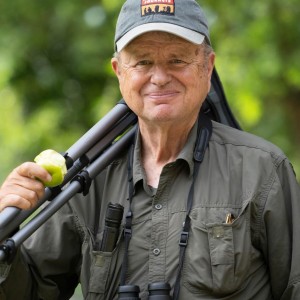
Greg recently retired as the Migratory Species Coordinator for U.S. Forest Service International Programs, working throughout the Western Hemisphere, and as Vice President for Audubon Society of Northern Virginia, serving on the Conservation and Citizen Science committees. He is currently a Board Member for BirdsCaribbean. For his Ph.D. in Zoology at University of Washington, he studied the coloration and behavior of Bullock’s Orioles. Greg studied ecology in Costa Rica with the Organization for Tropical Studies and has worked internationally for the past 20 years. Greg previously worked for the National Audubon Society, American Birding Association, Birder’s World magazine (sadly, now defunct), Partners in Flight, and Cornell Lab of Ornithology. He is a Fellow of the American Ornithological Society (AOS). He has been a birder since he was 11 and has birded in all 50 states and 47 countries.
Other trips with Greg Butcher
-
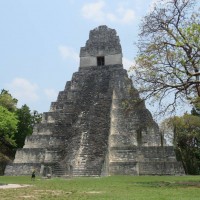 Best of Guatemala: Birding & Culture FULL! See our March Belize Short & Sweet trip.January 21 - 31, 2026, w/Tikal extension
Best of Guatemala: Birding & Culture FULL! See our March Belize Short & Sweet trip.January 21 - 31, 2026, w/Tikal extension -
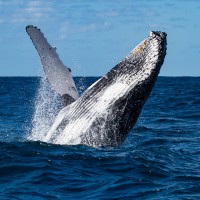 Southern California: Spring Coastal BirdingFebruary 16 - 23, 2026
Southern California: Spring Coastal BirdingFebruary 16 - 23, 2026 -
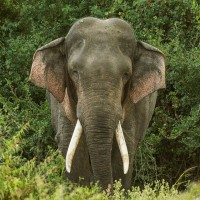 Island of Wonder: Birds & Nature of Sri Lanka Only two spaces left!March 13 - 25, 2026, w/Mannar Island extension
Island of Wonder: Birds & Nature of Sri Lanka Only two spaces left!March 13 - 25, 2026, w/Mannar Island extension -
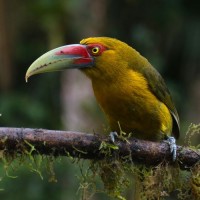 Jewels of Brazil's Atlantic ForestJune 12 - 23, 2026
Jewels of Brazil's Atlantic ForestJune 12 - 23, 2026 -
 Enchanting Okavango: Birds & Mammals of BotswanaAugust 21 - September 1, 2026, w/Nxai Pan/Kalahari extension
Enchanting Okavango: Birds & Mammals of BotswanaAugust 21 - September 1, 2026, w/Nxai Pan/Kalahari extension
-
Essential Information +
Packing List +
Suggested Reading List +
Useful Links +
Photo credits: Thumbnails: Common Gallinule (Kent Skaggs), American Alligator (Kent Skaggs), Blue Grosbeak (Peg Morgan), Great Egret (Kent Skaggs), Black-crowned Night Heron (Peg Morgan), American Oystercatcher, Roseate Spoonbill American Alligator (Kent Skaggs), Viewing platform at the Jekyll Island Welcome Center (Kent Skaggs), Great Egret nestlings (Kent Skaggs), Royal Terns (Peg Morgan)








